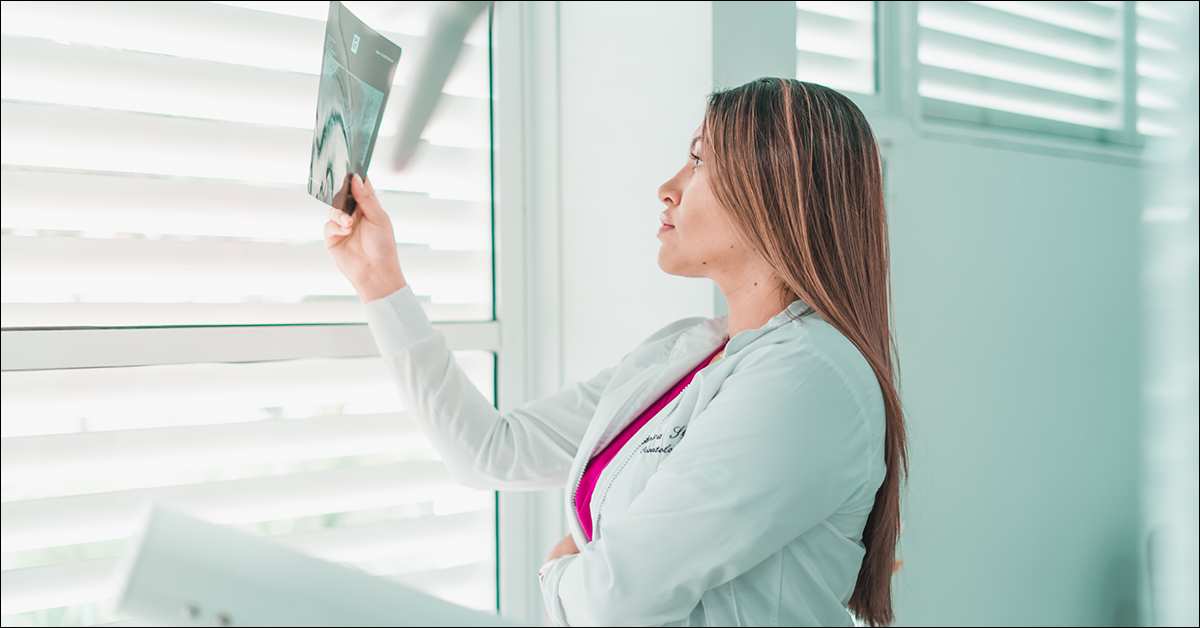How The Profession Is Organized In Illinois
REGULATION
As a dentist, you must be licensed to practice dentistry in the State of Illinois. The Illinois Department of Financial and Professional Regulation (IDFPR) and the Illinois Dental Board regulate the profession. They give Illinois licenses by both Acceptance of Examination (for first time licenses) and by endorsement of existing licenses. IDFPR also manages Dental Sedation permits that allow licensed dentists to administer local and general anesthesia.
The American Dental Examination (ADEX) is the qualifying examination for an Illinois dental license. However, this is the last step in a longer process of education and examinations that international dentists must complete to practice in the state.
This guide assumes you are an international dentist who has permanent U.S. work authorization but is only now beginning to rebuild your career in the U.S. Therefore, the guide will include steps that come before the final state licensing process, including: foreign credential evaluation, 3 exams, and completion of a 2 year Advanced Standing Program for International Dentists.
EMPLOYMENT
The vast majority of dentists practicing in the U.S. are self-employed in individual or group practices with a small staff. Staff usually includes one or more dental assistants or dental hygienists. These roles are explained in more detail in the section Other Careers and Credentials. Some international dentists decide to become dental assistants or dental hygienists.
According to the Bureau of Labor Statistics, most dentists are generalists (about 89%) and take care of a variety of dental needs. Orthodontists, who straighten and reposition teeth, are the largest group of specialists within dentistry. They make up less than 6% of all dentists. The average salary of dentists in the US was $146,920 in 2010.
At this time there is only moderate growth expected in dentistry. This is partly because of new dental treatment technologies and the increased role of dental hygienists and assistants in oral health. Most new job opportunities in dentistry will come from dentists’ retirements or from increased demand as a result of an aging population who have a greater need of dental care. Cosmetic procedures such as teeth whitening and braces for all ages are other sources of expanding dental practice.
Eligibility For Licensing
This section explains 5 important steps that you need to complete before you can be licensed to practice dentistry in Illinois. The steps to licensing are as follows:
DENTIST LICENSING MAP

I. FOREIGN DEGREE EVALUATION AND NBDE PART I
ECE Evaluation Report
Educational Credential Evaluators, Inc. (ECE) is the only credentialing organization accepted for foreign degrees in dentistry. ECE requires official dental school transcripts, plus translations submitted according to special instructions available on their application.
Fee: $85
You should begin the ECE before applying for the National Board Dental Exam NBDE Part I. ECE will send an Evaluation Report. You are allowed to take the NBDE Part I only after the ECE evaluation is approved.
National Board of Dental Examination Part I
The application for the NBDE Part I exam is an online registration and payment process. You will not be approved to sit for the exam, however, until your ECE Evaluation Report has been approved.
We discuss the test format and content in the next topic, Tests.
Once you have passed the exam you are eligible to apply for a 2-year Advanced Standing program for international dentists.
II. 2-YEAR ADVANCED STANDING PROGRAM
The state of Illinois requires foreign graduates of dental programs not approved by the American Dental Association to take an additional 2-year course in a U.S. or Canadian accredited dental program. This is commonly referred to as an Advanced Standing Program. You will earn a Doctor of Dental Surgery, or DDS degree. Only one dental school in the state of Illinois offers this program. You will need to research other schools if you are willing to leave Illinois to get this extra education.
UNIVERSITY OF ILLINOIS AT CHICAGO INTERNATIONAL DENTAL DEGREE PROGRAM
- 2-year program ending in a DDS degree (full time, 6 semesters)
- Only open to U.S. permanent residents, refugees or asylees
- 24 students per year, admitted in May
- TOEFL and review of dental degree required
- Program costs are near $196,304 for 2012 – but financial aid is available
CONSIDERING EDUCATIONAL DEBT
The cost of the program may be higher than you can imagine paying. It is also likely that other U.S. dental schools will have similar costs for Advanced Standing Programs. Graduate education in the U.S. tends to be very expensive. However, you must consider this debt in the context of your future earning potential. Before you make a final decision, you should get advice from a dental school financial aid administrator or career counselor. Discuss the cost and map out the ways you may be able to pay back the loan. If necessary, you can consider other lower-level positions in the dental field. These positions can help you progress towards licensing or even become a more permanent career change for you – see Other Careers and Credentials for more information.
III. NBDE PART II
You are eligible for NBDE Part II as early as 45 days before completing your US DDS degree. We discuss the test format and content in the next topic.
IV. PASS THE AMERICAN DENTAL EXAMINATION, ADEX
The American Dental Examination is your last test before being eligible for licensure! It involves clinical practice and observation. We discuss the test format and content in the next topic.
V. APPLICATION FOR LICENSURE BY ACCEPTANCE OF EXAMINATION
The IDFPR has a detailed application package available online. Some of the documentation it requires includes:
- 4-page application
- Certification of Education Form
- Certification of 2 years’ training at an approved U.S. or Canadian dental program
- Receipt of NBDE Grade Card and ADEX exam results from the testing agencies directly
You mail the completed application package to IDFPR for processing.
Fees: $250
Note: if you plan to operate your own dental business, as soon as you have a business address you must also fill out the Application for State Controlled Substances Registration. This will allow you to store controlled drugs on site for your dental practice. The application costs just $5 for each site you register. This form is a necessary first step for federal controlled substances registration and is provided in your Application for Licensure by Acceptance of Examination.
Tests
NATIONAL BOARD DENTAL EXAMINATION PART I
The NBDE Part I is a computer-based exam available year-round through the testing company Prometric.
The 8 1/2-hour test consists of 400 multiple choice questions broken into 4 basic content areas.
- Anatomic Sciences
- Biochemistry and Physiology
- Microbiology Pathology
- Dental Anatomy and Occlusio
2012 Fee: $345
If you fail any part of the NBDE Part I you can retake it separately for additional fees.
NATIONAL BOARD DENTAL EXAMINATION PART II
The application process is similar to NBDE Part I and can be completed online. Prometric administers the test on a rolling basis.
NBDE Part II lasts over 12 hours and is taken over 2 consecutive days. It is a 500-question multiple choice test.
Day 1 has 400 questions from 9 discipline areas:
- Endodontics
- Operative dentistry
- Oral and maxillofacial surgery/pain control
- Oral diagnosis
- Orthodontics/pediatric dentistry
- Patient management
- Periodontics
- Pharmacology
- Prosthodontics
Day 2 has 100 questions based on case simulations. The tester will review a variety of case materials presented on the screen and answer several questions about one patient at a time.
2012 Fee: $390
AMERICAN DENTAL EXAMINATION (ADEX)
The American Dental Examination, or ADEX, is a test that combines a computer-based exam with clinical practice on both real patients and life-size models called Manikins. The exam is given three times a year.
Illinois refers candidates to a regional testing authority to schedule the ADEX: the North East Regional Board (NERB) administers ADEX in several cities. You will need to apply online at the NERB website to schedule the exam. You will have to travel to a test site. The closest one to Illinois is Indianapolis, Indiana.
THE ADLEX HAS 5 PARTS WORTH 100 POINTS EACH:
- Computer-based Diagnostic Skill Exam
- Endodontics Exam (on Manikin)
- Prosthodontic Exam (on Manikin)
- Periodontal Examination (on patient)
- Restorative Examination (on patient)
Fee: $2,085 for the exam + $100 for processing
You must pass each of the 5 Parts with a score of 75 or higher to complete this step. A passing grade on all parts gives you “NERB Status” and makes you eligible to apply to the state of Illinois for your dental license by Acceptance of Examination. If you fail any of the 5 parts, you will need to take that part(s) again.
Time And Costs
Successfully licensing as a Dentist in Illinois depends on many factors. Just some of these include:
- The completeness of your educational and professional records
- Your performance on several tests
- Your ability to attend and finance a 2-year full-time Dental program
We provide two hypothetical scenarios to show some of the variety of results that immigrant professionals may find when they seek to become dentists in Illinois. Please consider these scenarios as two examples out of many possibilities. Your experience will vary.
TWO HYPOTHETICAL SCENARIOS FOR DENTIST LICENSING:
[table id=16 /]
Other Careers And Credentials
LOWER-LEVEL JOB OPPORTUNITIES
You may want to consider whether taking a lower-level job in a dental practice in the short term can help you meet longer-term goals of licensing as a DDS. Working in your field in a different capacity and with fewer responsibilities may offer you some advantages:
- More energy to focus on studying and saving money for an Advanced Standing DDS program
- A chance to adapt to the US healthcare system and workplace culture in a lower-pressure environment
If you choose any of these positions as a step towards licensing, be sure to explain your long-term plans to your employer. You may find that some employers offer benefits such as tuition reimbursement or schedule flexibility that can support your goals.
DENTAL HYGIENIST
The state of Illinois also regulates and licenses dental hygienists in the state. Dental hygienists must complete a 2 or 4 year training program and pass the Dental Hygiene exam (written and clinical parts) from the National Board of Dental Examination before being licensed. Preventive dental treatment is the main responsibility of a dental hygienist: in the U.S. it is unusual for a dentist to perform routine cleanings of patients’ teeth. Hygienists are even able to administer nitrous oxide to patients if they complete a short training. Hygienists who work for smaller practices may work part-time or work in more than one office. A part-time hygienist earning an hourly wage may not have full medical benefits but will often receive inexpensive or free dental care. Experienced, salaried dental hygienists can earn $70,000. Many International Dentists decide to become Dental Hygienists as a permanent career change instead of returning to dental practice; others use it as a first step towards re-establishing themselves as dentists in the U.S.
DENTAL LAB TECHNICIAN
Dental lab technicians do not need a license to work. They create and repair dental prosthetics and other accessories used by dentists. On-the-job training is the norm for this position, so if you developed this skill through dental practice, you may find it easy to qualify for this position immediately.
DENTAL ASSISTANT
A dental assistant works in a dental office helping with non-medical parts of dental procedures like preparing patients, and keeping the mouth clean and instruments ready for use by the dentist. Dental assistants work under the supervision of a licensed dentist and are not licensed by the Department, but they can take certain exams to qualify them for more responsibilities.
Beyond Licensing
MAINTAINING LICENSURE
Licenses expire on September 30 every three years: 2012, 2015 etc. IDFPR sends a notice to you reminding you to renew your license, so be certain to keep your contact information up-to-date with their office. If you let your license expire, you will have a much more complicated process to restore the license. You must also document 48 hours of continuing education over each 3-year renewal period.
JOINING A PROFESSIONAL ASSOCIATION
State and national associations for dentists provide opportunities for professional development and networking. They also help set acceptable working conditions for the profession and give information and opinions on policy in Illinois and across the U.S. Their websites may offer useful orientation to dental candidates about the licensing and examination process, including test preparation. They often provide Continuing Education to members as well.
State:
- Illinois State Dental Society
National:
- American Dental Association
Beyond these two general associations, there are a large variety of professional associations for dentists that emphasize a dentist’s specialty discipline, race and ethnicity, gender, or religion.
LICENSING MOBILITY (RECIPROCITY)
The state of Illinois grants licensing to dentists through Acceptance of Examination (the process described in this topic), or by Endorsement. A dentist licensed in another state, who wants to practice in Illinois, must independently meet all Illinois requirements for licensing. If you become licensed in Illinois and want to practice dentistry in another state, you will need to research the legal requirements for that state.
APPLYING FOR A DENTAL SEDATION PERMIT
You must already be a licensed dentist in Illinois before you can apply to IDFPR for a Dental Sedation Permit. Permit A is for conscious sedation and Permit B is for deep sedation and general anesthesia. If you qualify for Permit B, though, you will not need to apply for Permit A. Either permit costs $300 and requires proof of license and other history related to your preparation to administer anesthesia. Note: if you only will use nitrous oxide in your practice, you do not have to get a Dental Sedation Permit at all.
Common Words
A
ADVANCED STANDING PROGRAM
A 2-year accelerated program for International Dentists who need to meet U.S. and Canadian education requirements for licensing eligibility. The Program gives you a DDS degree.
G
GRANT
Money that is given to you to help cover your educational expenses. It does not have to be paid back like a loan. Financial aid for education often includes both grants and loans.
I
INTERNATIONAL DENTIST
A foreign-educated dentist of any nationality. An International Dentist usually refers to someone who has graduated from a dental school which is not accredited in the U.S.
Important Links
LICENSING AND REGULATION:
- The Illinois Dental Practice Act has more information on regulation and renewal of a dental license
- Illinois Department of Financial and Professional Regulation (IDFPR) Professional Dental Professions page has links to all licensing applications for Dentists and Dental Hygienists; Phone: 217/782-8556
- Dental Sedation Permit application
CREDENTIALING ORGANIZATIONS:
- Educational Credential Evaluators, Inc. (ECE); Phone: 414/289-3400
ADVANCED STANDING PROGRAM FOR INTERNATIONAL DENTISTS:
TESTING:
- National Board Dental Examination (NBDE) Part I
- National Board Dental Examination (NBDE) Part II
- ADEX Exam manuals
- The ADEX administrator for Illinois is the North East Regional Board of Dental Examiners, Inc. (NERB). You can register online. Phone: 301/563-3300
PROFESSIONAL ASSOCIATIONS:
- The American Dental Association (ADA) is a professional association, accrediting body for dental programs, and an examination authority. It is headquartered in Chicago, Illinois
- Illinois State Dental Society
Tips
GET YOUR QUESTIONS ANSWERED
Be your own advocate throughout the licensing process. Seek clarification about questions and concerns directly from official sources. Organize your questions and ask for assistance.
FIND OUT ABOUT FINANCIAL AID
The very high cost of the Advanced Standing Program for International Dentists is a big obstacle to licensing. However, since it is a degree program, you are eligible for financial aid. You should first ask to speak with a financial aid counselor to get a better understanding about your ability to pay. Educational debt is common in the U.S. and you need to consider the income you expect to make after finishing your education.


